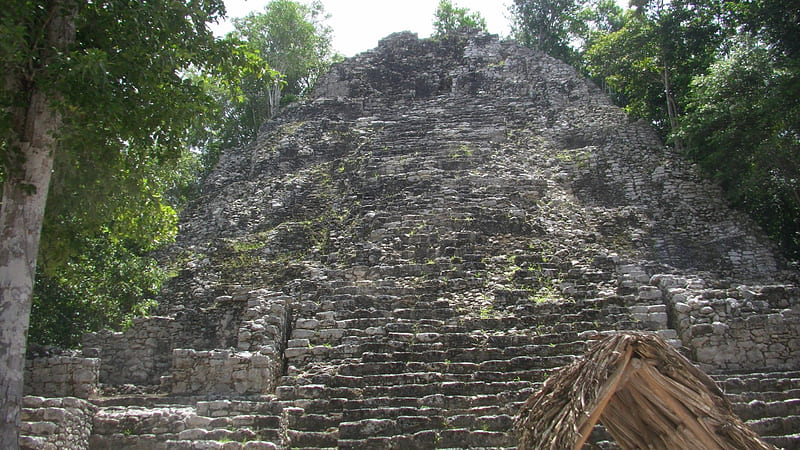
Morley and committed to conduct long-term archaeological research at Chichen Itza. In 1913, the Carnegie Institution accepted the proposal of archaeologist Sylvanus G. Thompson shipped the bulk of the artifacts to the Peabody Museum at Harvard University. Thompson is most famous for dredging the Cenote Sagrado (Sacred Cenote) from 1904 to 1910, where he recovered artifacts of gold, copper and carved jade, as well as the first-ever examples of what were believed to be pre-Columbian Maya cloth and wooden weapons.

#Chicineta mexico ruins series
His discoveries included the earliest dated carving upon a lintel in the Temple of the Initial Series and the excavation of several graves in the Osario (High Priest’s Temple).

For 30 years, Thompson explored the ancient city. In 1894 the United States Consul to Yucatán, Edward Herbert Thompson, purchased the Hacienda Chichén, which included the ruins of Chichen Itza. Maudslay published the first long-form description of Chichen Itza in his book, Biologia Centrali-Americana. Teobert Maler and Alfred Maudslay explored Chichén in the 1880s and both spent several weeks at the site and took extensive photographs. Augustus Le Plongeon called it “Chaacmol” (later renamed “Chac Mool”, which has been the term to describe all types of this statuary found in Mesoamerica). In 1875, Augustus Le Plongeon and his wife Alice Dixon Le Plongeon visited Chichén, and excavated a statue of a figure on its back, knees drawn up, upper torso raised on its elbows with a plate on its stomach. By 1535, all Spanish had been driven from the Yucatán Peninsula. He was forced to abandon Chichén Itzá in 1534 under cover of darkness. Montejo the Younger attempted an all out assault against the Maya and lost 150 of his remaining troops. Months passed, but no reinforcements arrived. The Maya became more hostile over time, and eventually they laid siege to the Spanish, cutting off their supply line to the coast, and forcing them to barricade themselves among the ruins of the ancient city. At first he encountered no resistance, and set about dividing the lands around the city and awarding them to his soldiers. Montejo the Younger eventually arrived at Chichen Itza, which he renamed Ciudad Real. The objective from the beginning was to go to Chichén Itzá and establish a capital. He sent his son, Francisco Montejo The Younger, in late 1532 to conquer the interior of the Yucatán Peninsula from the north. Montejo returned to Yucatán in 1531 with reinforcements and established his main base at Campeche on the west coast. His first campaign in 1527, which covered much of the Yucatán Peninsula, decimated his forces but ended with the establishment of a small fort at Xaman Ha’, south of what is today Cancún. In 1526 Spanish Conquistador Francisco de Montejo (a veteran of the Grijalva and Cortés expeditions) successfully petitioned the King of Spain for a charter to conquer Yucatán. According to post-Conquest sources, both Spanish and Maya, the Cenote Sagrado remained a place of pilgrimage. The relatively high population density in the region was a factor in the conquistadors’ decision to locate a capital there. When the Spanish arrived, they found a thriving local population, although it is not clear from Spanish sources if Maya were living in Chichen Itza or nearby. Ongoing research at the site of Mayapan may help resolve this chronological conundrum.Īfter Chichén Itzá elite activities ceased, the city may not have been abandoned. Archaeological data now indicates that Chichen Itza declined as a regional center by 1250, before the rise of Mayapan. While there is some archaeological evidence that indicates Chichén Itzá was at one time looted and sacked, there appears to be greater evidence that it could not have been by Mayapan, at least not when Chichén Itzá was an active urban center. During one such ceremony, the chronicles state, there were no survivors, so Hunac Ceel leaped into the Cenote Sagrado, and when removed, prophesied his own ascension. According to custom at the time, individuals thrown into the Cenote Sagrado were believed to have the power of prophecy if they survived. Hunac Ceel supposedly prophesied his own rise to power.

According to some colonial Mayan sources (e.g., the Book of Chilam Balam of Chumayel), Hunac Ceel, ruler of Mayapan, conquered Chichen Itza in the 13th century.


 0 kommentar(er)
0 kommentar(er)
